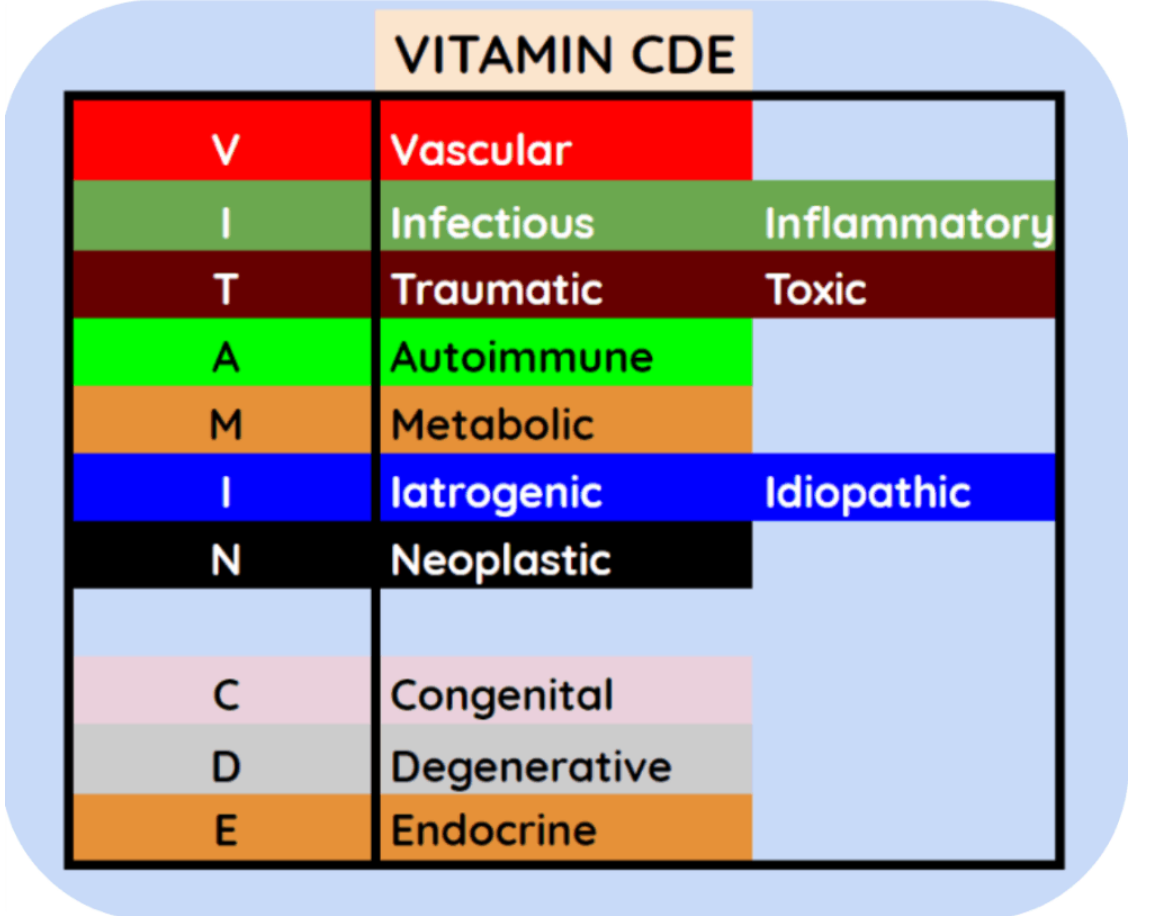Picture this: You are the medical student (or resident) presenting a patient to your attending in the hospital🧑🏻⚕️. You asked all the right questions❓, did a proper physical exam💪, and took great notes📝. Then the attending asks the inevitable question that stops you in your tracks.
"So what is on your differential for this patient?"
Creating a high quality differential diagnosis is one of the most critical aspects of being a physician and caring for patients🔴. Doctors need to obtain and analyze a large amount of information😵💫 and then use that to synthesize a list of possibilities as to what could be causing a patient's symptoms, AKA a differential diagnosis.
While there are a variety of ways to go about this, one memory aid that I like to use is the VITAMIN CDE mnemonic🍊. Before I go any further, take a look at the picture below:

I love the VITAMIN CDE mnemonic because it is easy to remember and is a logical way to organize all of the different categories of disease that could be linked to a patient's complaints🧠.
One potential issue with this mnemonic is that it does not organize your differential in certain ways such as based on level of severity, which may be preferred in certain specialties (like Emergency Medicine🚑). Nonetheless, whenever I have a patient in the ED with limited history or when I am not sure what is going on, I pull this mnemonic up and comb through it in my head in an effort to expand my list of possible diagnoses🤔.
Although there are many other mnemonics out there (VINDICATE, VITAMIN ABCDEK, etc.) VITAMIN CDE is my go to because it is easier to remember while also being quite all-encompassing✅.
Try it out on your next patient!👍🏽